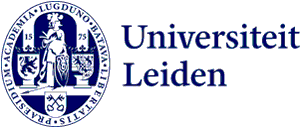
Investigating obsidian sources in Honduras with a Corrie Bakels Grant
Obsidian, a volcanic glass-like material, is often used for making tools by Mesoamerican societies. In Honduras, certain obsidian artefacts do not yet have a known provenance. PhD candidate Marie Kolbenstetter and Assistant Professor Dennis Braekmans were awarded a Corrie Bakels Grant to explore thus far unknown obsidian sources in the Central American country.

Obsidian objects
Recently, Marie Kolbenstetter and Dennis Braekmans worked on finding the source of obsidian objects in Honduras. ‘We started with exploratory work,’ Braekmans notes, ‘in identifying obsidian sources in that part of the world. This gave us good results, but also more questions. Several chemical groups, found in the obsidian, were difficult to attribute to a source. Our goal is to pinpoint these on the map.’
‘There is this problem of overlap in chemical signatures in the region,’ Kolbenstetter adds, ‘You've got basically two sources of obsidian: either the original outcrop, where obsidian was formed due to lava flows, or riverbeds, where you find dragged away pieces of obsidian. The latter is usually described as lower quality.’
Samples
To determine the natural source of the obsidian artefacts you both need archaeological, as well as geological samples. ‘The archaeological samples have already been analysed in Leiden,’ Braekmans says. ‘In May we will travel to Honduras to sample some outcroppings that are known, but have never been analysed.’
‘There are two obsidian outcrops we want to analyse in the course of this project,’ Kolbenstetter explains. ‘One source is high up a mountain plateau. We will need to consult local communities to be guided up there. The other source is in a more populated area.’

Chemical proxies
The analysis involves some chemical proxies. ‘This is a variability in chemical elements, that differs per source. Every outcrop has its own fingerprint,’ Braekmans notes. ‘We use our Faculty's portable XRF scanner to obtain this information. The ratio of chemical elements spotted helps us to determine the provenance of the obsidian artefacts.’
‘The results of this study will hopefully give us more insights into the regional socioeconomic behaviour,’ Kolbenstetter notes. ‘Especially in sountern Honduras and Central America. We are far from having identified all the potential obsidian sources, but this would be one more step.’ Braekmans nods. ‘Perhaps this can grow further.’
About the Bakels Grant
C.C. Bakels is an Emeritus Professor of Archaeology in the Faculty of Archaeology, who specialises in natural sciences research within archaeology. She obtained her PhD in 1978 and in 1998 was appointed as Professor of Paleo-economics in a chair endowed by the LUF; in 2003 this chair was converted into a regular chair.
Purpose
To promote natural sciences research within archaeology, primarily at Leiden University and secondarily at other universities or scientific institutes in the Netherlands.
